Signs That Indicate a Failing AC Circuit Control Board Requires Replacement
Recognizing the signs of a failing circuit control board prevents further damage and supports timely HVAC repair or replacement.
An air conditioning system relies on its circuit control board to manage essential functions, regulate power distribution, and facilitate communication between key components. As the central processing unit of the HVAC system, the control board interprets thermostat commands, coordinates motor functions, and activates relays. When this critical component begins to fail, noticeable disruptions in system performance occur, leading to inefficiencies, erratic operation, and potential system shutdowns. Recognizing the signs of a failing circuit control board prevents further damage and supports timely HVAC repair or replacement.
Failure To Respond To Thermostat Commands
The circuit control board processes temperature adjustments at the thermostat, signaling the system to activate heating or cooling cycles. When a failing board loses its ability to relay commands effectively, the HVAC system may not turn on or remain unresponsive despite adjustments. Delayed system activation or frequent cycling interruptions often indicate a deteriorating board.
A functional board verifies seamless communication between the thermostat and internal components. Unresponsive controls, unexpected power losses, or intermittent failures suggest that electrical connections within the control board are no longer reliable. Testing thermostat functionality alongside control board diagnostics helps confirm whether replacement is necessary.
Irregular System Cycling And Unexpected Shutdowns
A properly functioning air conditioning system follows controlled cycles based on environmental conditions and thermostat settings. A failing circuit control board may cause irregular cycling, leading to inconsistent temperature regulation. Short cycling, where the system repeatedly turns on and off rapidly, places excessive strain on compressors and fan motors, accelerating wear.
Frequent system shutdowns without apparent cause often result from faulty relays or disrupted signal pathways within the control board. Components receiving inconsistent power signals fail to maintain stable operation, forcing premature shutdowns. Addressing these cycling irregularities prevents additional stress on HVAC components and reduces the likelihood of expensive repairs.
Burnt Odor Or Visible Damage On The Control Board
Physical signs of control board failure often include discoloration, melted wiring, or burn marks on circuit traces. Electrical faults such as power surges, moisture exposure, or overheating contribute to visible board damage. A noticeable burnt odor near the control panel compartment suggests overheating capacitors or damaged resistors, impairing functionality.
Inspecting the board for evidence of burned connectors, warped components, or loose solder joints reveals potential failure points. If visual damage is present, professional evaluation determines whether minor repairs can restore operation or if a complete board replacement is required.
Unusual Noises Emanating From The Control Panel
Clicking, buzzing, or humming noises from the HVAC control panel indicate electrical irregularities within the circuit board. Relay switches within the board engage and disengage as part of normal operation, but abnormal sounds become frequent when failing components struggle to transmit signals.
A malfunctioning board may cause relays to cycle improperly, resulting in repetitive clicking as the system attempts to stabilize. Buzzing or humming sounds suggest electrical resistance issues, often caused by deteriorating capacitors or failing transistors. Identifying these noises early prevents further complications that can lead to full system failure.
Intermittent Power Failures And Voltage Irregularities
The circuit control board regulates voltage distribution across the HVAC system. When the board malfunctions, inconsistent power delivery causes intermittent failures in blower motors, compressors, or fan assemblies. Voltage irregularities often lead to overheating, short circuits, or complete system shutdowns.
Fluctuating power supply conditions can also impact control board stability. Systems exposed to frequent power surges or grounding issues experience accelerated board degradation. HVAC technicians conduct voltage tests to assess circuit board integrity and determine whether replacement is necessary.
Inconsistent Blower Or Fan Motor Operation
A failing circuit control board affects the coordination between the blower assembly and fan motors. A system struggling with irregular fan operation may experience poor airflow distribution, inconsistent cooling, or difficulty maintaining desired temperatures.
Blower fans that operate at inconsistent speeds or fail to turn off after a cooling cycle indicate signal transmission issues within the control board. When motors receive conflicting or delayed commands, overall system efficiency declines, leading to increased energy consumption and reduced indoor comfort.
Failure To Activate Heating Or Cooling Modes
The control board directs system components to switch between heating and cooling modes based on thermostat settings. A failing board may prevent seamless transitions, causing the system to remain stuck in one mode or fail to activate.
When a control board loses its ability to engage heating elements or cooling compressors, maintaining indoor climate control becomes difficult. Testing system responsiveness under heating and cooling conditions helps identify whether control board failure disrupts regular operation.
Diagnostic Testing And Professional Evaluation
HVAC professionals use specialized tools, including voltage meters, thermal scanners, and diagnostic software, to assess control board performance. Visual inspections identify physical damage, while electrical testing reveals voltage distribution and signal processing irregularities.
Error codes generated by modern control boards assist in pinpointing malfunctions within system components. A thorough assessment confirms whether issues stem from minor electrical faults or if full control board replacement is the best solution.
Preventing Future Control Board Failures
Power surge protection reduces the likelihood of control board damage caused by voltage fluctuations. Whole-home surge protectors and HVAC-specific power regulators help stabilize electrical input, preventing sudden spikes from compromising system components.
Routine maintenance supports long-term control board reliability, including HVAC installation inspections and duct cleaning. Proper airflow management and system ventilation prevent overheating, reducing stress on electronic components.
A failing AC circuit control board disrupts system performance, leading to irregular cycling, unresponsive thermostat commands, and electrical instability. Early recognition of warning signs supports timely HVAC repair, preventing further component strain and reducing long-term maintenance costs. Professional evaluation and targeted diagnostics confirm whether replacement is necessary, restoring system efficiency and indoor comfort.

